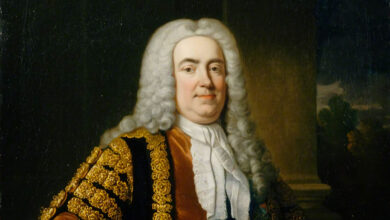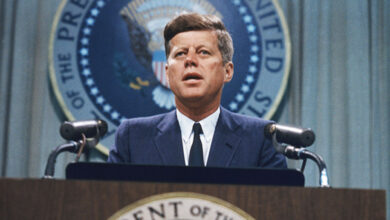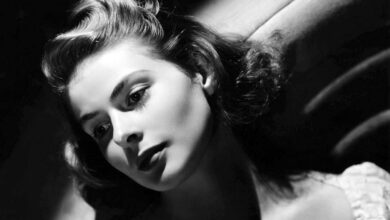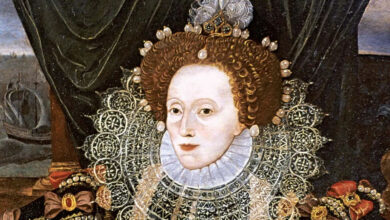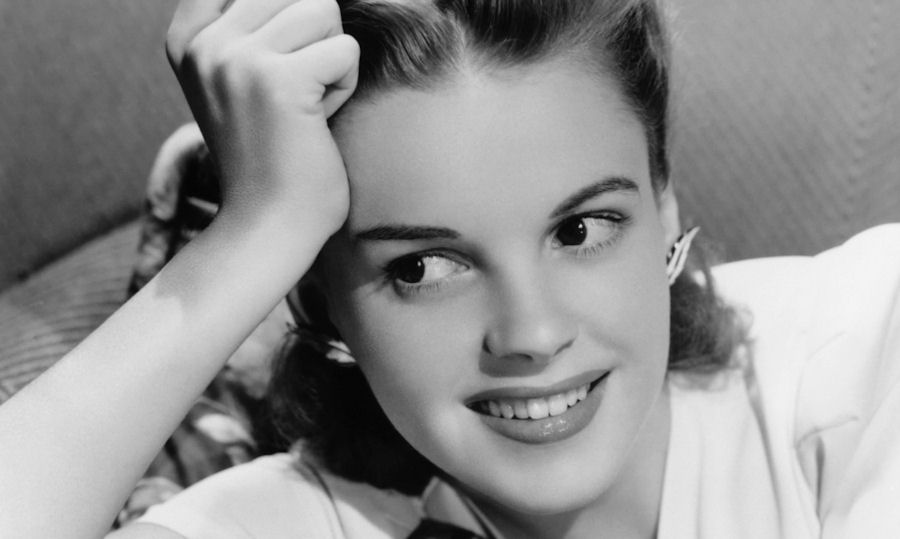 “If I am a legend, then why am I so lonely?” – Judy Garland
“If I am a legend, then why am I so lonely?” – Judy Garland
Podcast: Play in new window | Download
Subscribe: Spotify | Amazon Music | Youtube Music | RSS
Judy Garland Biography
Frances Ethel Gumm, better known to the rest of the World as Judy Garland, was born on 10 June 1922 in Grand Rapids, Minnesota, USA. She was born into the entertainment industry as her parents, Francis Avent Gumm, known as Frank, and Ethel Marion Milne were the owners of a movie theatre in Grand Rapids within which they promoted vaudeville acts.
It didn’t take long for Frances, or ‘Baby’ as the rest of the family called her to take to the stage as she first performed at the age of just two and a half years when she joined her two older sisters Mary Jane and Dorothy Virginia on the stage during a Christmas show to sing the chorus of Jingle Bells. This was the start of her career as the Gumm Sisters as they became known would perform regularly at their parents’ theatre, with their mother playing the piano for the next few years.
In June 1926, rumours started to circulate that Frank Gumm had made improper advances towards male ushers at the theatre and so the family moved to Lancaster in California where Frank bought another theatre. Ethel took it upon herself to manage her daughters and made it her goal to get them into the movies. After arriving in California Frances enrolled at the Hollywood High School and eventually went on to graduate from University High School in West Los Angeles.
The Gumm Sisters enrolled in a dance school in 1928 and joined the Meglin Kiddies dance troupe which led to an appearance by the sisters in their first movie, a 1929 short called The Big Revue in which they danced and sang a number called That’s the Good Old Sunny South. The following year saw them on two more shorts, A Holiday in Storyland and The Wedding of Jack and Jill. The former of the two featured Frances in her first on screen solo.
The Gumm Sisters toured for a number of years until they appeared in 1934 at the Oriental Theatre in Chicago, where George Jessel, a co-performer suggested they change their name to something a little more appealing than Gumm. There are a number of stories about how the sister’s new name came about and it remains unclear which if any of them are true, but suffice it to say by late 1934, the Gumm Sisters had become the Garland Sisters, and shortly afterwards, Frances changed her name to Judy, and at that point a legend was born. In August 1935, the Garland Sisters broke up when Mary Jane, who had changed her name to Suzanne flew to Reno, Nevada and married a member of the Jimmy Davies orchestra, a musician called Lee Kahn.
Almost immediately, Judy was invited to Culver City in Los Angeles to perform in an impromptu audition at MGM. She performed two songs, Zing! Went the Strings of My Heart and a popular Yiddish vaudeville song called Eli Eli, and was immediately signed to a contract. Garland was only 13 years old at the time but this was a problem for the studio as she was too old to play the standard child star types of role but too young to play glamorous leading lady parts. She was self-conscious about her appearance and was aware that she was not as pretty as some of her contemporaries such as Ava Gardner and Lana Turner. Even the studio’s chief, Louis B. Mayer referred to her as his ‘little hunchback”. This led to insecurities that Judy carried with her for the rest of her life.
Shortly afterwards, in November 1935, Judy’s father contracted meningitis and was hospitalised. He died at the age of only 49, leaving Judy devastated. Even so, she still managed to perform “Zing! When the Strings of My Heart” on the radio, her first professional rendition of the song. It went on to be one of the standard songs performed by her at her concerts.
A couple of years later, in 1937, Judy Garland met Mickey Rooney on the set of Thoroughbreds Don’t Cry and soon afterwards, Judy was cast in the fourth of the Hardy movies as the girl next door, opposite Rooney as Andy Hardy in Love Finds Andy Hardy. They would go on to make five more movies together, two of which were Andy Hardy films.
Garland later said that the pace of production in the movie industry was very difficult to keep up with, especially for young people such as herself and Rooney. The studios would make them take amphetamines to keep them awake and then later would give them barbiturates to help them sleep. This led to an addiction to drugs by many young actors, Garland included, and she blamed the studio for robbing her of her youth. Mickey Rooney later stated though that the studio had not prescribed Judy Garland any drugs.
If you stop anyone in the street and asked them to name a film which starred Judy Garland, the chances are that the first one they would mention would be The Wizard of Oz. The part of Dorothy Gale in the movie which was released in 1939 is by far her most memorable film role. Immediately after the movie was completed, the studio sent her on a gruelling promotional tour for both The Wizard of Oz and with Mickey Rooney following the completion of Babes in Arms which was completed shortly afterwards. During this time Garland was kept on a strict diet to help keep her weight down and she was even given tobacco in order to suppress her appetite. The blue gingham dress Judy wears in The Wizard of Oz was chosen because it hid her figure and made her look younger. Judy Garland won her only Academy Award, a juvenile one, which recognised her performances in The Wizard of Oz and Babe in Arms. After this, she became one of MGM’s biggest stars.
IN 1940 Judy Garland appeared in three films which represented a few notable firsts for her. The part she played in Little Nellie Kelly was her first adult role and required her to use an accent for the first time and also included her first on-screen kiss which she found awkward and embarrassing. It was at this time though that Garland also experienced her first off-screen romances, the first of which was with Artie Shaw a bandleader whom she became totally devoted to and he would leave her devastated when he eloped with Lana Turner. On her 18th birthday, she became engaged to another musician called David Rose but she had to wait for a year before she could marry him as he was still married to Martha Raye. They eventually married on 27 July 1941, but by 1944 they were divorced with Judy having terminated a pregnancy by him in 1942. The same year she achieved top billing for the first time when she starred with Gene Kelly in his first movie, For Me and My Gal.
In an effort to try and move the now 21-year-old Judy Garland away from the girl next door image, she was dolled up in Presenting Lily Mars, wearing glamorous gowns and having her hair styled more fashionably.
In 1944 Garland introduced three new ‘standard’ songs, The Trolley Song, The Boy Next Door and Have Yourself a Merry Little Christmas in one of her most successful films, Meet Me In St. Louis. The director was Vincente Minnelli and he brought in a stylist called Dorothy Ponedel, who transformed Judy’s looks. Now she was the beautiful young woman and she was so impressed with the results that Ponendel was signed to all of Judy Garland’s remaining MGM movies.
During the filming of Meet Me in St. Louis and after some initial difficulties between the pair, Judy Garland and Vincente Minnelli began a relationship, and even though she had a brief affair with Orson Welles at around the same time, the couple were married on 15 June 1945. Daughter Liza was born on 12 March the following year.
Also in 1945, Judy Garland starred in The Clock, which was the first movie she made in which she didn’t sing. There was outcry from her fans though and she didn’t play a part in a straight-up dramatic role for a long time afterwards.
In 1947 she starred in The Pirate but it became the first movie since The Wizard of Oz not to make a profit, partly due to the fact that during filming Garland suffered a mental breakdown and made the first known attempt at suicide. She spent time in a private sanitarium and so production of The Pirate was severely delayed. Her next film though saw her popularity bounce right back to the top when she starred for the only time with Fred Astaire in Easter Parade after he had to stand in for Gene Kelly who had broken his ankle.
Garland was slated to work with Fred Astaire again on The Barkleys of Broadway, but she had begun taking prescription drugs to help her sleep and was also taking non-prescription morphine based pills. On top of this, she also developed a drinking problem and suffered from migraines. This led to her missing several days of filming in a row, leaving the studio no option but to suspend her. She was eventually replaced by Ginger Rogers.
At the end of 1948, she bounced back again though when she stepped in to replace June Allyson was had become pregnant in the musical In the Good Old Summertime. She had regained some much-needed weight, said she felt a lot better and even completed the movie five days ahead of schedule. In the Good Old Summertime did very well at the box office and even featured a two and a half-year-old Liza Minnelli at the end of the film.
She was next lined up to play the part of Annie Oakley in Annie Get Your Gun but was not enthusiastic about the part which everyone strongly identified with the undisputed First Lady of the comedy musical stage, Ethel Merman. She also was not keen to move back to a non-glamourous unflattering role, which she had spent years trying to get away from. She also didn’t like the way director Busby Berkely was staging the musical numbers which led to him dealing with her in a severe manner. All of this led to her complaining to the studio and she tried to get Berkely fired but ended up suspended herself. Following this Garland ended up in the hospital again where she was able to be weaned off the drugs and she began sleeping and eating normally again which led to her gaining weight.
She was cast opposite Gene Kelly again in 1949’s Summer Stock but in an effort to lose weight, ended up back on the pills. The movie was completed late, mainly due to Garland continually showing up late or sometimes not at all for filming. It performed well at the box office but ultimately was a loss for the studio.
Garland also failed to show for the filming of her next movie which again was due to be opposite Fred Astaire in Royal Wedding and the studio suspended her contract. She made another attempt at suicide at that time although the attempt led to nothing more than a band-aid being applied to a graze on her neck. In September 1950, and after 15 years making movies together, Judy Garland and MGM Studios went their separate ways.
Following her departure from MGM, she started to drop into a depression again and was struggling for money. She had a friend in Bing Crosby though and he invited her to sing on his radio show. During the 1950-51 season of The Bing Crosby – Chesterfield Show, Judy Garland made eight appearances and the crowds loved it. This caused Judy’s career to blossom again and she toured for four months to huge crowds across Europe. In 1951 she played to unprecedented audiences in New York’s Palace Theatre and received a Special Tony Award for her efforts.
She and Minnelli were divorced at around the same time and she married her tour manager, Sid Luft, on 8 June 1952 in California. She had two children with Luft, Lorna who was born on 21 November 1952 and Joey who was born on 29 March 1955.
In 1954, Garland and Luft put together a project to remake A Star is Born through their production company, Transcona Enterprises, with funding from Warner Brothers. At first Garland through herself into the project but was soon claiming illness which led to delays and cost overruns, leading to disputes with Warner. The movie upon its release met with lots of critical acclaim and it was popular with audiences as well, but it was a long movie, which meant that it couldn’t be played in theatres as many times per day as the theatres would like and they requested cuts be made to the runtime. Eventually, 30 minutes worth of edits were made which led to outrage both from critics and the public. It made around $6m at the box office but still lost money and Transcona would not make another picture with Warner. Garland was nominated for an Academy Award but lost to Grace Kelly, but did win the Golden Globe Award for Best Actress in a Musical. She also received nominations for her part in 1961’s Judgment at Nuremberg. Other films she completed after this time was 1962’s Guy Purr-ee (an animated feature), A Child is Waiting in 1963 and also in 1963 I Could Go On Singing.
In 1961, Judy got her own self-titled television special which first aired in 1962 and featured Frank Sinatra and Dean Martin. Following its success, CBS offered her $24m to make a weekly show, also to be called The Judy Garland Show. Although she had vowed in 1955 to never make a weekly television show, she needed the money. She was in debt to the revenue service for several hundred thousand dollars having failed to pay taxes in 1951 and 1952. So, the show debuted on 29 September 1963, but after only one season of 26 episodes, it was cancelled. Garland was devastated.
In 1963 Judy Garland filed for divorce from Luft and tried to make ends meet by returning to the stage. She also made guest appearances on various TV shows. She performed at the London Palladium alongside 18-year-old Liza in November 1964, a show which was screened on the ITV network in the UK.
A tour of Australia in 1964 was ultimately disastrous after she was booed off stage in Melbourne due to the show starting an hour late and the crowd believing her to be drunk.
Wher her divorce from Luft was finalised in May 1965, she went on to marry her tour promoter, Mark Herron on 14 November, but they divorced six months later.
Garland attempted a movie comeback in 1967 when she was cast in the part of Helen Lawson in Valley of the Dolls, but was fired after missing rehearsals. She returned to the stage and performed with her children Lorna and Joey in a 27 show run at New York’s Palace Theatre, but her health had started to deteriorate and she made her last concert appearance in Copenhagen in March 1969. She married for the fifth time during the same year, this time to nightclub manager Mickey Deans in London on 15 March.
On 22 June 1969, her husband found Judy Garland dead in the bathroom of their rented house in Chelsea, London. The cause of her death was an overdose of barbiturates, although the coroner Gavin Thurston stressed that he believed that it has been unintentional and that there was no evidence to support a verdict of suicide and so Judy Garland’s death certificate shows her death as accidental.
Judy Garland was interred at Ferncliff Cemetery in Hartsdale, New York, but at the request of her children, her remains were disinterred in January 2017 and relocated to the Hollywood Forever Cemetery in Los Angeles.
Podcast: Play in new window | Download
Subscribe: Spotify | Amazon Music | Youtube Music | RSS

